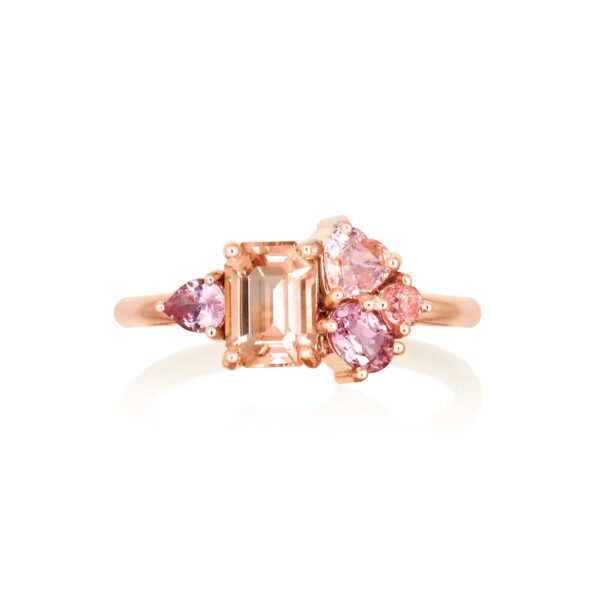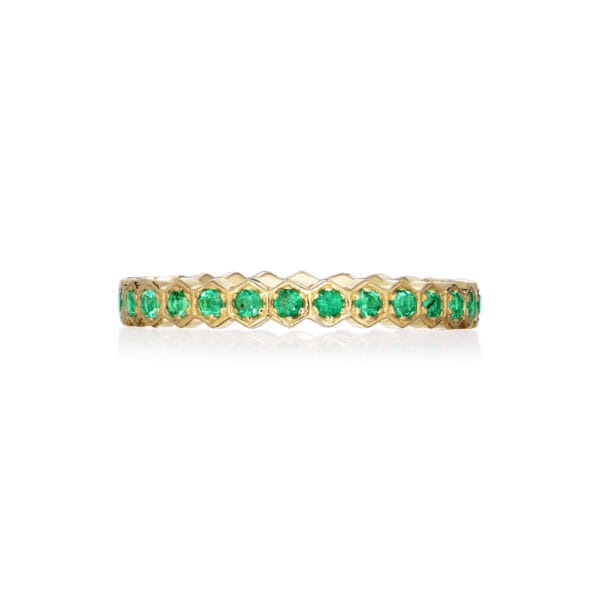No items in the basket.
Supply Chain Transparency
As members of the jewellery industry, we collaborate with global suppliers, where many are from developing nations. We’re conscious of the impact on equity and strive for a responsible approach. We care deeply for everyone involved in creating your Anpé jewellery, from miners in small communities to our skilled goldsmiths and setters. We’re dedicated to a transparent, ethical, and inclusive supply chain.
Below you can read about our suppliers, how the source the gemstones, diamonds and gold, and how your Anpé piece is made by our goldsmiths and setters.
Colorful Gemstones
All of our colorful gemstones come from our two trusted suppliers with whom we are in contact with daily. We are always on the hunt for new gems and when creating custom made designs, sourcing the perfect gemstone is an important part of the process. This require a very close collaboration with our suppliers.
Our gem trading partners are located in Sri Lanka and in Australia, and they are both engaged in the complete process from mining to market. This means that our gemstone partners get the colorful gemstones in their raw form from the mines, and personally undertake the processes of cutting and polishing before vending them to us.
Consequently, these gemstones follow a direct path from the mine to our supplier, and then to our showroom, eliminating the involvement of multiple intermediaries. This also means that we know the origin for the very vast majority of our colorful gemstones.
The majority of our colorful gemstones are sourced from mines in Madagascar and Sri Lanka, however we also get stones from other mines, hereunder Nigeria, Tanzania, Rwanda and Mozambique.
You can read more about the gemstones we use and their hardness and durability here.
Ethical and Conflict Free Diamonds
The ethical considerations related to the sourcing of diamonds have undergone significant examination over the past two decades. As a result, diamonds have become the most heavily regulated asset within the jewellery trade. Within the European Union, Denmark including, it is mandatory for all diamonds entering the EU (Denmark including) to come with a Kimberley certification, ensuring that they are conflict free.
All our bigger diamonds are sourced via Botswanamark in Antwerp, Belgium. They are meticulously handpicked and chosen by Line to meet the individual wishes and requirements for the particular jewellery piece.
Botswanamark diamonds all come from Botswana, and they begin their journey as rough stones mined by either Lucara or Deswana in Botswana. Each of the latter’s major operations in Botswana has been awarded ISO14001 certification, which means that they meet and exceed international and local environmental regulations. You can read more about Botswanamark’s footprint here.
The rough diamond thereafter continue its journey to be cut and polished. Botswanamark has three ateliers for diamond cutting, Antwerp, Botswana and India. All three ateliers are certified by the Responsible Jewellery Council.
All diamonds are meticulously tracked at every stage from the mine, through the polishing process to the final customer. And each diamond above 0.20ct comes with a separate certificate of provenance.
You may already know the 4 C’s to determine a diamonds quality and value: Cut, Clarity, Carat and Color. Botswanamark works with a 5th C:
“The traditional 4C’s describe the diamond’s quality and speaks of the physical characteristics of a diamond, but not to the positive impact they have on people and community. Botswanamark diamonds enrich the lives of the people of Botswana. Help to bring economic growth, education, healthcare, wildlife protection and supports communities in building a legacy. We call this the 5th C – Community.”
Botswana is one of Africa’s fastest growing economies, which is due to diamonds. The diamond mining industry accounts for a third of the country’s GDP. In other words, diamonds are crucial for the people of Botswana. In a close partnership between the civil society, the government and businesses making long term investments in collaboration with local communities it is ensured that the benefits are truly shared with those on the ground. If you would like to learn more about the importance of the diamond mining for the people of Botswana, you can see a short documentary here (15 minutes).
All diamonds from Botswanamark are GIA certified.
Diamond Melees (below 0.15ct)
All our smaller diamonds are also conflict free and (as mentioned above) the diamonds can’t enter the European Union without a Kimberley certification, ensuring that they are conflict free.
The Kimberley Process
The Kimberley Process is an international certification scheme aimed at preventing the trade of conflict diamonds – meaning diamonds which have been linked to human rights abuses and destabilization of countries. The Kimberley Process seeks to ensure that the diamond trade benefits local communities and does not contribute to violence or oppression.
The process began in 2003 when governments, non-governmental organizations (NGOs) and the diamond industry came together to address the issue of conflict diamonds . The main objective was to establish a system to track and certify the origins of rough diamonds, ensuring they are sourced from legitimate, conflict free areas.
The Kimberley Process works by requiring the participating countries to implement a set of stringent measures and controls to prevent conflict diamonds from entering the legitimate diamond supply chain. This involves:
- Certification – Each parcel of rough diamonds must be accompanied by a certificate stating that the diamonds are conflict free.
- Import and export controls – Participating countries must have legislation and procedures in place to prevent the import or export of conflict diamonds. This includes verifying the legitimacy of diamond shipments and requiring Kimberley certificates.
- International controls – Participating countries must establish internal controls to ensure that diamonds are not being smuggled or mixed with conflict diamonds from other sources.
- Monitoring and reporting – Regular audits and assessments of the Kimberley Process implementation are conducted by member countries and independent experts to ensure compliance.
- Collaboration – Governments, the diamond industry and civil society work together to ensure effective implementation of the Kimberley Process.
The Kimberley Process has contributed to raising awareness about the issue of conflict diamonds and has led to increased transparency in the diamond supply chain.
Today 99.8 % of diamonds are certified conflict free.
You can read in depth about the Kimberley process here.
All our diamond melees come from mines in either Botswana, South Africa, Nigeria and Canada.
Antique Diamonds
Antique diamonds offer an environmentally conscious alternative, being repurposed rather than newly mined. Each antique diamond is meticulously chosen by Line, either sourced from our Antwerp diamond supplier or acquired through Misfit Diamonds. All antique diamonds are handpicked for the individual jewellery piece.
Lab Grown Diamonds
We experience an increase in the interest for lab grown diamonds, and as a new part of the Anpé design range, we also offer lab grown diamonds in our custom made jewellery pieces. In close collaboration with our diamond supplier in Antwerp, we’re sourcing the lab grown diamond for your specific piece.
Gold and Platinum
We work solely with gold and platinum for our jewellery pieces.
We use 18K gold for the majority of our custom made and collection pieces as well as we use platinum. The Josephine Series, the Trine Ji Rings and the Winck Collection ring and earrings are made of 14K gold.
The vast majority of our pieces are handmade. Some pieces are casted.
Our goldsmiths use Valcambi gold and platinum. Valcambi is dedicated to responsible sourcing, and has established internal sourcing procedures to guarantee that the mining and trading of the gold and platinum have not in any way played a role supporting human rights violations, environmental harm, conflicts etc. You can read Valcambi’s full supply chain policy here.
Jewellers and Production
Our jewellers are located in Colombo in Sri Lanka, where we work with a small team of 7 people, including two goldsmiths, one polisher and one setter. We’re working incredibly closely with them and visit when possible.
By manufacturing in Colombo we are supporting a small workshop in a country that has given us so much – and where the Anpé story started.



New in
Our newest colorful collection palette.








